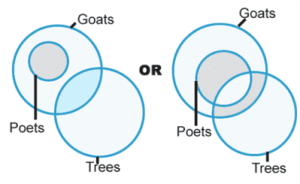Percentages for CAT is a vast topic. Every year about 5-6 questions come from this topic along with its fusion with other topics like Ratio and Proportion, Profit and Loss etc. Learning shortcuts and tricks to solve your questions is an important preparation strategy. We advise you not to delay learning shortcuts and tricks for later. The sooner you learn it, the better.
In this article, there are 5 shortcuts that will boost your Quant score in 7 minutes.
What are you waiting for?
Let’s enroll in BellCat for CAT 2024.
Shortcuts for Percentages
1. Let the population of a town be P now and assume it increases at the rate of R% per year, then:
Population after n years = P [1 + (R/100)]n
Example: The present population of a village is 5500. If the number of males increase by 11% and the number of females increase by 20%, then the population will become 6330. What is the present population of females in the village?
Options:
(a) 2000
(b) 2500
(c) 3000
(d) 2750
Solution:
We know that,
The total present population of village = 5500
Let the present population of males be x
Then, the present population of females = 5500-x
Rate of increase in number of males = 11%
Rate of increase in number of females = 20%
Then, Population after the increase = P [1 + (R/100)]n
Population of males after the increase = x[1+(11/100)] = (111/100)x
Population of females after the increase = (5500 − x)[1+(20/100)] = (120/100)(5500 − x)
As given,
Total population of the village after the increase = 6330
Accordingly,
(111/100)x + (120/100)(5500 − x) = 6330
⇒ 111x − 120x + 660000 = 633000
9x = 27000
x = 3000
Therefore, Population of females after the increase = (120/100)(5500 − 3000) = 2500
So, the correct option is (b)
2. Let the original population of a village be V and assume it increases at the rate of R% per annum, then:
Population n years ago = V/[1+(R/100)]n
Example: The present population of a town is 6000. A year ago, the population of the town was 2000. Then, What was the rate at which the population of the town increased?
Options:
(a) 200%
(b) 110%
(c) 100%
(d) 75%
Solution:
We know that,
Present population of the town = 6000
Population of the town a year ago =2000
Rate of increase = R
n = 1
Accordingly,
2000 = 6000/[1+(R/100)]
⇒ 1 + (R/100) = 6000/2000
(100+R)/100 = 3
100 + R = 300
R = 300 – 100
R = 200%
Therefore, the correct option is (a)
3. An employer reduces his employee’s wages by x% and then increases his reduced wage by y%. The resultant wage will be:
[1+(y/100)] of ([1 − (x/100)] of the original wage)
Example: An IT worker’s salary was reduced by 50%. After the 5 days, the reduced salary was increased by 20%. If the new salary is Rs. 30,000, then find the original salary of the IT worker.
Options:
(a) Rs. 40,000
(b) Rs. 42,500
(c) Rs. 45,000
(d) Rs. 50,000
Solution:
We know that,
The new salary of the IT worker = Rs. 30,000
let the original salary be S
then, the reduced salary = [1 − (50/100)] S
the rate by which the salary was increased = 20%
Accordingly,
⇒[1 +(20/100)] × [1 − 50/100] × S = 30,000
(120/100) × (50/100) × S = 30,000
(12/10) × (5/10) × S = 30,000
(60/100) × S = 30,000
S = 50,000
As a result, the original salary of the IT worker = Rs. 50,000
The correct option is (d)
4. If x is R% more than y, then y is less than x by
[(R/(100+R)) × 100]%
Example: The milk in a mixture is 10% more than water. The water is 50 millilitres in the mixture. Then, by how much percentage is the water less than milk in the mixture?
Options:
(a) 8%
(b) 9%
(c) 10%
(d) 11%
Solution:
We know that,
R = 10%
x = Milk
y = Water
Accordingly,
⇒ (10/(100+10)) × 100
(10/110) × 100
= 9.09%
Therefore, the correct option is (b)
Note: Avoid confusion by crossing out anything in the question that doesn’t help you get the answer when reading it. This will help you get the answer quickly and efficiently.
5. If x is R% less than y, then y is more than x by:
[(R/(100 − R))× 100]%
Example: The salary of a cobbler is less than the salary of a plumber by 12%. The salary of a cobble is Rs. 5000. Then, What is the percentage of the salary of a plumber by which it is more than the salary of a cobbler?
Options:
(a) 12.5%
(b) 14.5%
(c) 15%
(d) 17.5%
Solution:
R = 12%
Here, in this question x = Salary of a cobbler
y = Salary of a plumber
Therefore, the required percentage = (11/(100 − 12)) × 100
⇒ (11/88) × 100
= 12.5
Therefore, the correct option is (a).
So, contact us if you want to know more about these types of questions with answers. Also, for our My Captain Program, visit our website or our About Us section.
Author:
Anand Roy, our Verbal Wizard, helps B-school hopefuls improve their verbal skills, ace interviews, and stay motivated. He leads engaging sessions using real-life stories, drawing from his vast mentoring experience and a PGDM from IMI.
- Name: bellCAT CAT Coaching Center in Kolkata
- Address: First Floor, 161, 7 C, Rash Behari Ave, Gariahat, Kolkata, West Bengal 700019
- Phone: 062890 79021
- Website: https://bellcat.in/






